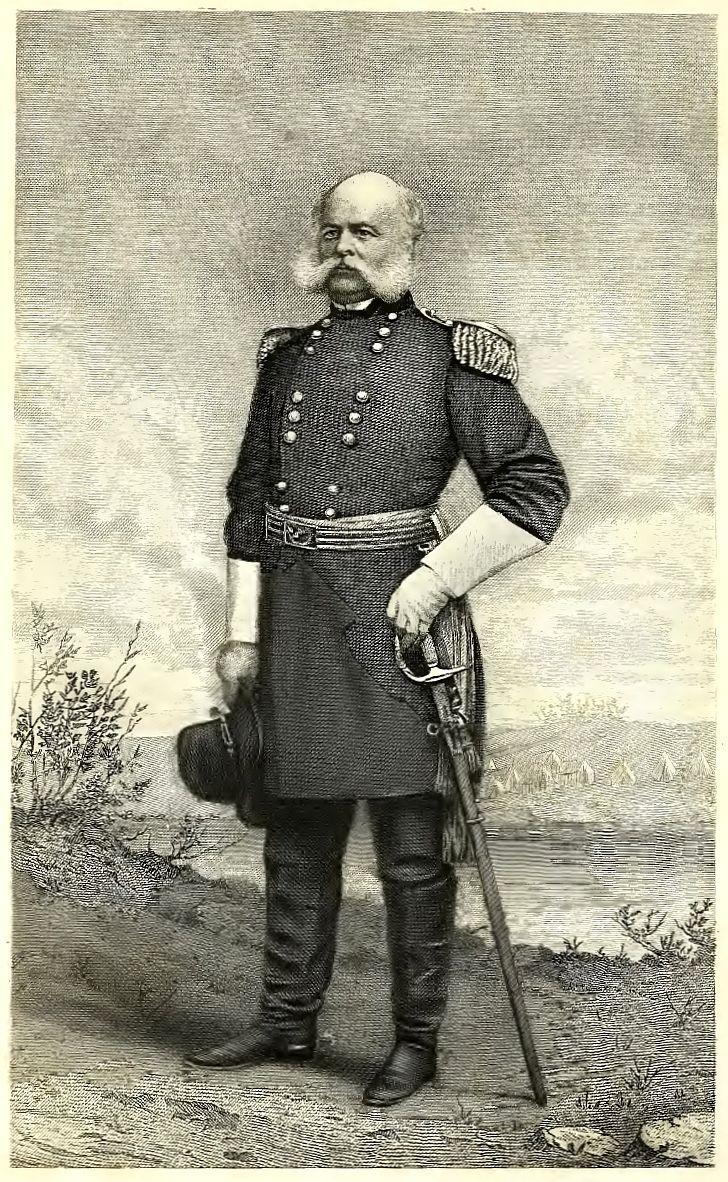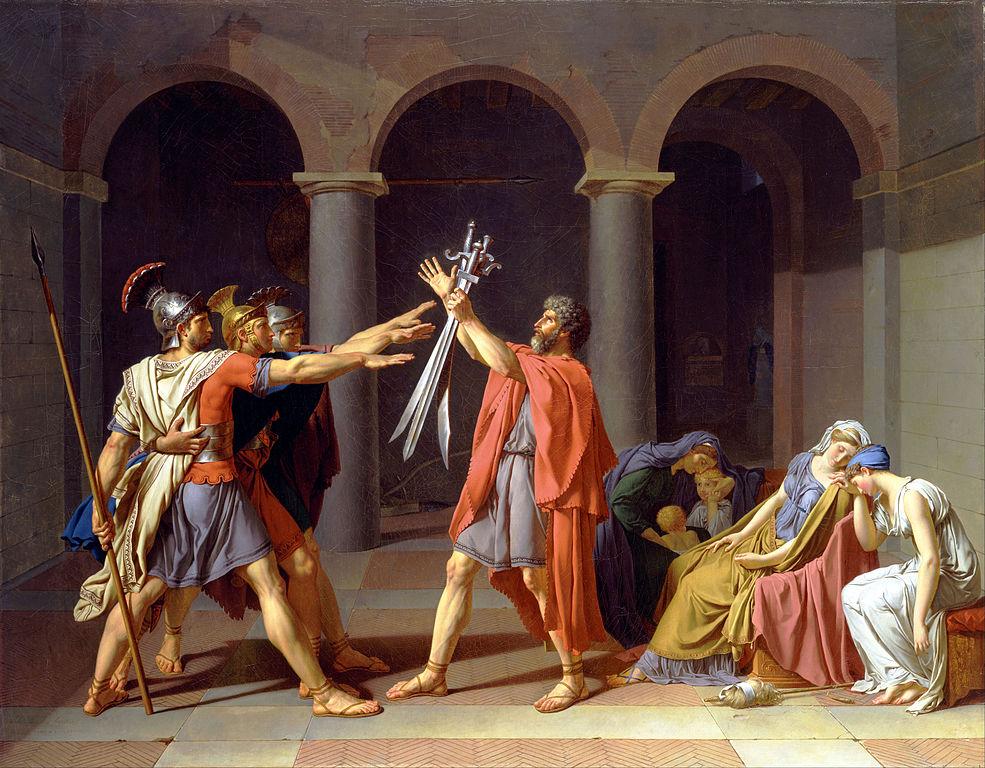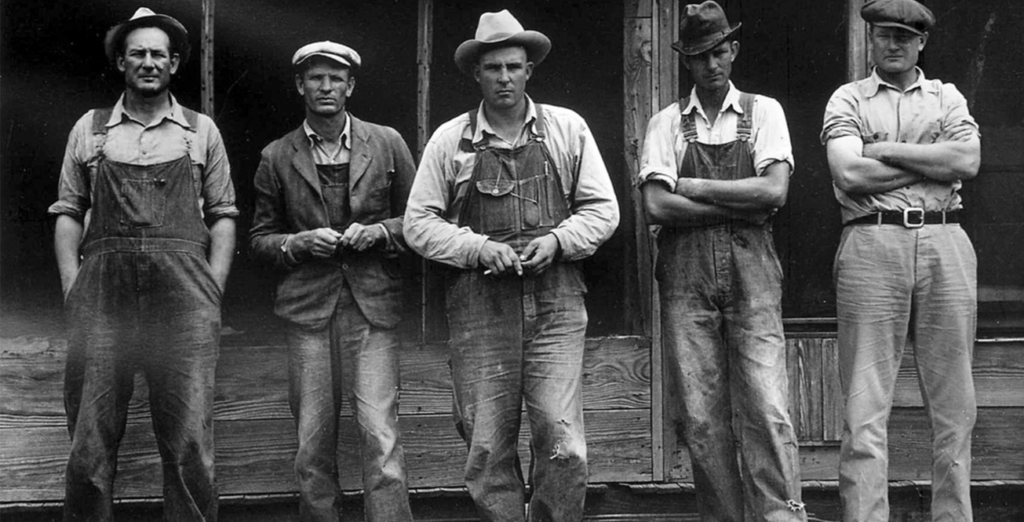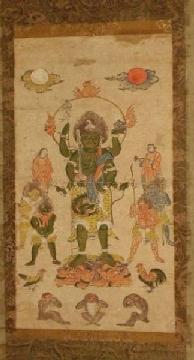This term has been in use in Greek since Herodotus (4th Century BCE). From there it entered English via Latin. It appeared in Old English as early as 9th Century and re-emerged in the 17th Century.
Tianzhu or Tenjiku was used in Chinese and Japanese to refer to the same thing.
What am I talking about?
Category: History
[340]
X was the King of Paurava, an ancient state within the territory of modern day Punjab located between the Jhelum and the Chenab rivers. X fought Y in the Battle of the Jhelum River in 326 BC.
Who are X and Y?
[312]
Concept of X originated in Japan pre-17th century (perhaps originating from China even earlier).
X most commonly consists of 3 characters: Mizaru, Kikazaru, Iwazaru and in some variations, even a fourth one called Sezaru.
X entered the Indian culture when it was gifted to Mahatma Gandhi by a Japanese monk named Nichidatsu Fujii.
What am I talking about?
[295]
The name of a tribe mentioned in the Rig Veda and notable for participating in the Battle of the Ten Kings.
The name of the king who was the son of King Dushyanta of Hastinapur and Queen Sakuntala. He was also an ancestor of the Pandavas and Kauravas.
These are two of the possible origin stories for which word?
[292]
This handsome man, Ambrose X was an army officer and politician who fought in the American Civil War.
A fashion style has been named after him. Can you guess it?

[278]
It has been stated that the decision to sell X was a political one, rather than financial one. Both Y & Z, who were involved in the transaction were cordial to neutral towards each other.
Y wanted to get rid of X as it was difficult for them to protect it, due to its proximity to Britain’s empire. While Z thought of it as a bargain, getting it at an equivalent of $129 million in 2023.
Give me X, Y & Z.
[254]
The leading theory is that X came from Samuel Wilson, a meat packer who supplied meat to U.S. troops in New York and New Jersey who were fighting against British invaders during the War of 1812. Barrels of Wilson’s meat stamped “U.S.” were associated with his nickname.
This gave rise to which phenomenon, which became even more famous during the World Wars.
[252]
X is believed to be of ancient Roman origin. While in modern times it was first seen in the painting The Oath of the Horatii (1784) & from there it was popularized by movies like Ben-Hur & Cabiria.
By 1923, X was picked up a particular party & was made mandatory for all party members. It functioned as a display of commitment and a declaration of principle to the outside world.
What am I talking about?

[245]
Often called the forgotten astronaut, can you name the third person on the Apollo 11 mission to the moon?

[243]
In 18oos, he implemented a new metric system for measurement in his country. It was based on the system of kilogram and meter. For example, he modified metric pound to 500g instead of 489g.
After losing power, he spent the last six years of his life in confinement by the British on the island of Saint Helena.
Guess who?
[228]
Which historical figure from 1400s, also the patron saint of France, was executed for the following charges:
• Claiming to follow God’s direct commands
• Prophesying the future
• Wearing men’s clothing
[220]
While the origins of the festival are unknown, it was celebrated in early 1600s by Shivaji Maharaj in Pune.
Centuries later it was revived by Lokmanya Tilak in 1892 as a means to circumvent the colonial British government ban on Hindu gatherings. It was here that the festival became a more public celebration, rather than private affair.
Can you identify the festival?
[214]
X was the 6th Surveyor General of India (1830-1843) & was part of the 70 year ‘Great Trigonometric Survey’ to map out of the entire Indian subcontinent. He was known for his pioneering work & detail orientation.
Such was his reputation that when his successor Andrew Scott Waugh found a remarkable (now globally known) landmark in the region, he said it had to be named after X.
Can you identify X or the landmark named after him?
[200]
The English word X comes from the Hindi word chāmpo चाँपो (more familiarly known as champi चंपी).
Which itself ultimately comes from the Sanskrit word chapati (चपति), meaning to press, knead, sooth.
X was introduced in Britain by Sake Dean Mahomed in 1815 and has now become ubiquitous the world over.
Can you identify X?
[198]
X is a word of Venetian origin.
It was practiced by European sailors in 14-15th century.
Earlier supposed to be 30 days long, it was extended by 10 days, which where its name is derived from.
Identify X.
[188]
At the end of the World War I, the German navy sank their own naval fleet rather than handing it over the British Royal Navy, going against Treaty of Versailles. This was done at Scapa Flow, an archipelago north of UK.
The scrap from the sunken fleet became more valuable after World War II and is being currently used in a scientific tool.
Can you identify how these scraps are being used?
[180]
On December 21, 1913, Arthur Wynne published X in the New York World newspaper. By 1925, the craze for X was in full force, with people both criticizing the irrelevant mental gymnastics, and also addicted to the hobby.
The word X became part of the Oxford English Dictionary in 1933 and still finds a place in our current world.
What is X?
[167]
Norse myth believed that this event was caused by wolves Skoll and Hati.
The Chinese believed that this was the result of a dragon & used bang drums & shoot arrows to scare it away.
Indian mythology blamed an immortal floating head for this.
Incans thought it was due to wrath of God, and used to perform sacrifices (rarely human).
These are the belief systems behind which event?
[165]
On March 18, 1937, a natural gas leak caused an explosion and destroyed the London School in New London, Texas, United States. The explosions was one of the deadliest in the history of Texas, leading to 600+ deaths & injuries.
The question is, what regulation did this tragedy give rise to, which is followed till today.
[147]
Dungaree fabric is a coarse thick fabric which was used to make hard work trousers or overalls or jumpsuits.
Can you guess where did the garment get its name from?




